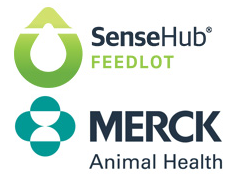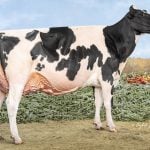Finding experienced workers is an issue facing many industries today – and a challenge familiar to Canadian feedlot operators. The skills needed to identify struggling animals and to pull cattle are not that easy to source, and so the industry finds itself looking for ways to reduce the workload of trained workers to help fill any labour gaps.
“To find people who want to be trained for this job is getting more and more difficult,” says Kevin Antworth, feedlot manager at Red Coat Cattle Feeders in Hazenmore, Saskatchewan. “There aren’t as many big families who are raised with these skills, and it’s hard to find people who have learned how to do cattle and pen checking. The further away you are from an urban centre, the more difficult it becomes.”

Right now, Antworth says they rely on word of mouth and social media to find skilled workers and also work on training all their riders to become better at recognizing issues. He works with existing staff to identify a sick animal quickly, to know what to look for and to know how to get them out of the herd in a timely manner.
“Labour shortages are an ongoing challenge for feedlots everywhere,” agrees Marissa Lemay, livestock monitoring account manager with Merck Animal Health. “True pen checking is almost a lost art. Not many people want to be cowboys anymore, so as a company we are looking to find new ways to support these businesses to make early and accurate detection on animal health concerns.”
Antworth says he expects SenseHub® Feedlot to be another set of eyes in the feedlot and help him to use his resources efficiently. In addition, technology could also help them identify issues that might only be visible to an experienced eye.
“We are always open to new ideas that are proven, or we can help prove, to help us reduce our workload and improve the health of our animals,” says Antworth. “What we need is something that is relatively dependable, not too complicated and that will make the job easier.”
Individual animal health is crucial to overall herd health

In addition to the animal welfare concerns, a single animal that is not well can risk the health of the entire herd. And if they don’t perform well, that can result in reduced profit potential.
Early identification of health concerns such as BRD, or animals that are off feed can greatly impact the overall health of the herd but also allows that individual animal to be treated sooner and get back on feed for better outcomes.
“For those in the industry the goal is to support the welfare of each animal in the feedlot,” says Lemay. “If they are sick and unhealthy and unhappy – that is something nobody wants. Early and accurate detection is a critical part of feedlot management.”
In terms of return on investment for feedlot owners and managers, healthy animals stay on feed or return to feed quicker and gain faster. The quicker they can receive treatment, the less likely they will require re-treatment.
Technology to augment staff expertise
Lemay says Merck developed SenseHub® Feedlot to help identify outlier cattle sooner and get them back on feed quicker.
“Ideally, someone would not have to be as highly trained to go to the pen safely and pull the cattle identified by the technology,” she says. “It’s our goal to support the labour challenges in feedlots and to make it so that the technology is available on an individual animal basis, rather than on a group level.”
She acknowledges that the introduction of new technologies is in and of itself a challenge and it must be delivered in a way that has results in mind, with an eye to costs and ease of use.
“With the high prices of cattle and feed, the more cattle you can take to harvest the better off you are,” says Lemay. “Our goal is to introduce SenseHub® Feedlot to help feedlot operators save time and better allocate resources for better outcomes.”










